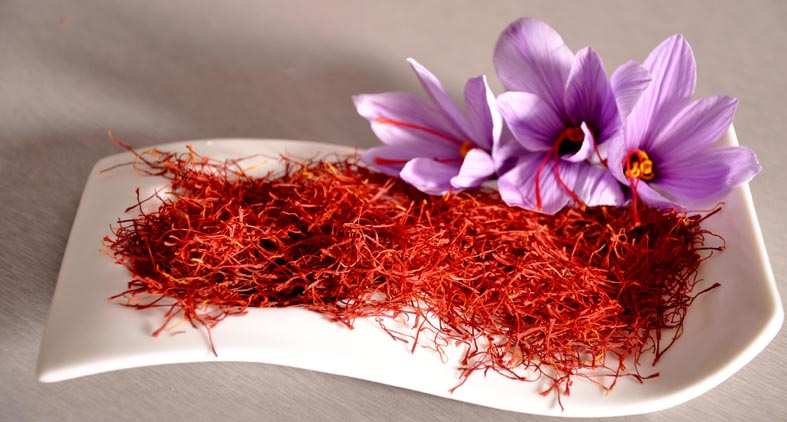Shopping: what to buy in Iran
Iran is a great place to buy souvenirs and you will find it hard not to indulge yourself. In fact due to its very old civilization, rich cultures and also geographical location, has an important role in the world arts and crafts.
Mass production is not common, prices are low and the quality is generally high, even at the budget end of market. Naturally, the bazaar is the best place to start looking, although much of what is on sale in places like Kerman, Kashan and Hamadan is more likely to suite local tastes.
Conversely, in places like Isfahan and Shiraz where foreign tourists are more common, the goods may be more inviting. if you are not keen on haggling and don’t have much time to look around, the government – run Iran handicrafts organizations has fixed – price shops in most provincial capitals.
Various places in Iran specialize in specific products. Often, knowing the best place to buy something is as important as getting a good price.
Persian Carpets
The dazzling beauty and excellent quality of Persian carpets is well known all over the world. They are available in many designs, sizes, colors and can be made from wool or silk or a combination of both. Designs and patterns can vary as each region of the country has its own variation and custom of weaving. The women of nomadic tribes living in the plains mainly weave Gilims. We have a guide how to buy a Persian carpet here.
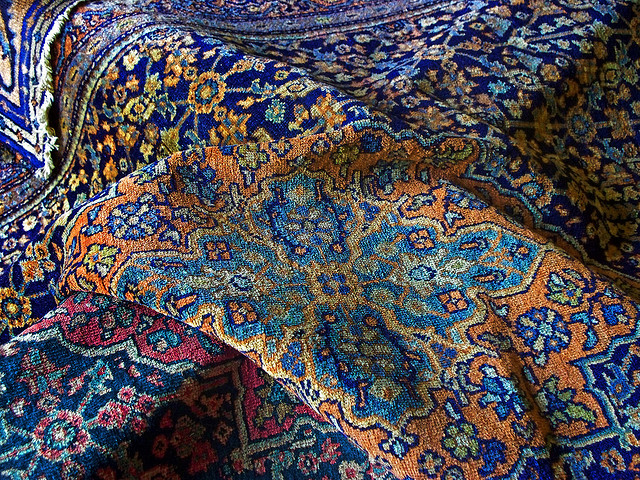
Qalamzanī - is one of the traditional engraving handicrafts that dates back over hundreds of years. Engraving is done on different metals such as copper, brass, silver or gold among other alloys. To engrave, first the back side of the work is covered by tar to prevent the work from causing a lot of noise, as well as getting punctured as a result of the hammering. Then the chosen designs or patterns are engraved on the work by different chisels. After the engraving is done the tar is removed from the work and the chiseled area is covered with charcoal powder and black lubricating oil. Finally the work is wiped clean and the black lines of the engraved designs appear on the surface of the work.
Khatam – khātam kārī or inlaid work, is one of the graceful Iranian handicrafts that is utilized to coat boxes, cases and frames. The origin of the name may come from the fact that in one centimeter of ‘Khātam’ more than 200 pieces of wood, metal and bone are employed-something which demands a great deal of dexterity, precision and patience. Tiny triangles of wood, bones (camel’s and ivory), metal (gold, silver, copper and brass), glue and tools such as thin saws and files are among the typical items utilized in making of “Khātam’.
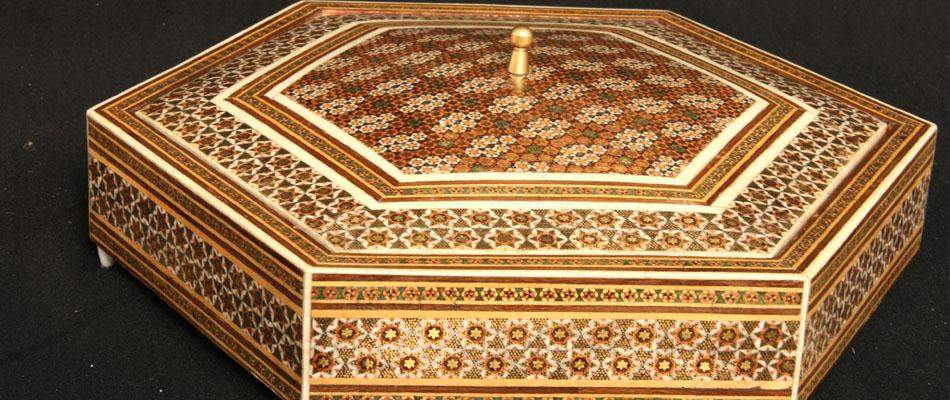
Mina - is one of the most traditional enamel handicrafts of Iran whose origin dates back to around 2000 B.C. Enameled working is done through two different methods; the first method is to turn the colors into soft powder and mix them with water and glycerin, and then solve them on a glass surface and finally drawing the desired design on the object, just like an ordinary water color painting. In the second method, however, the colors are mixed with pine tree ink and the objects are painted using oil color technique. In both methods the enameled objects are heated on an alcohol burner to burn the ink, before putting them in the kiln. Next the enameled objects are glazed and put back in the kiln again. The necessary tools for this craft are: kiln, clamp, pliers and brush. Esfehān is the chief center of this enameled work.
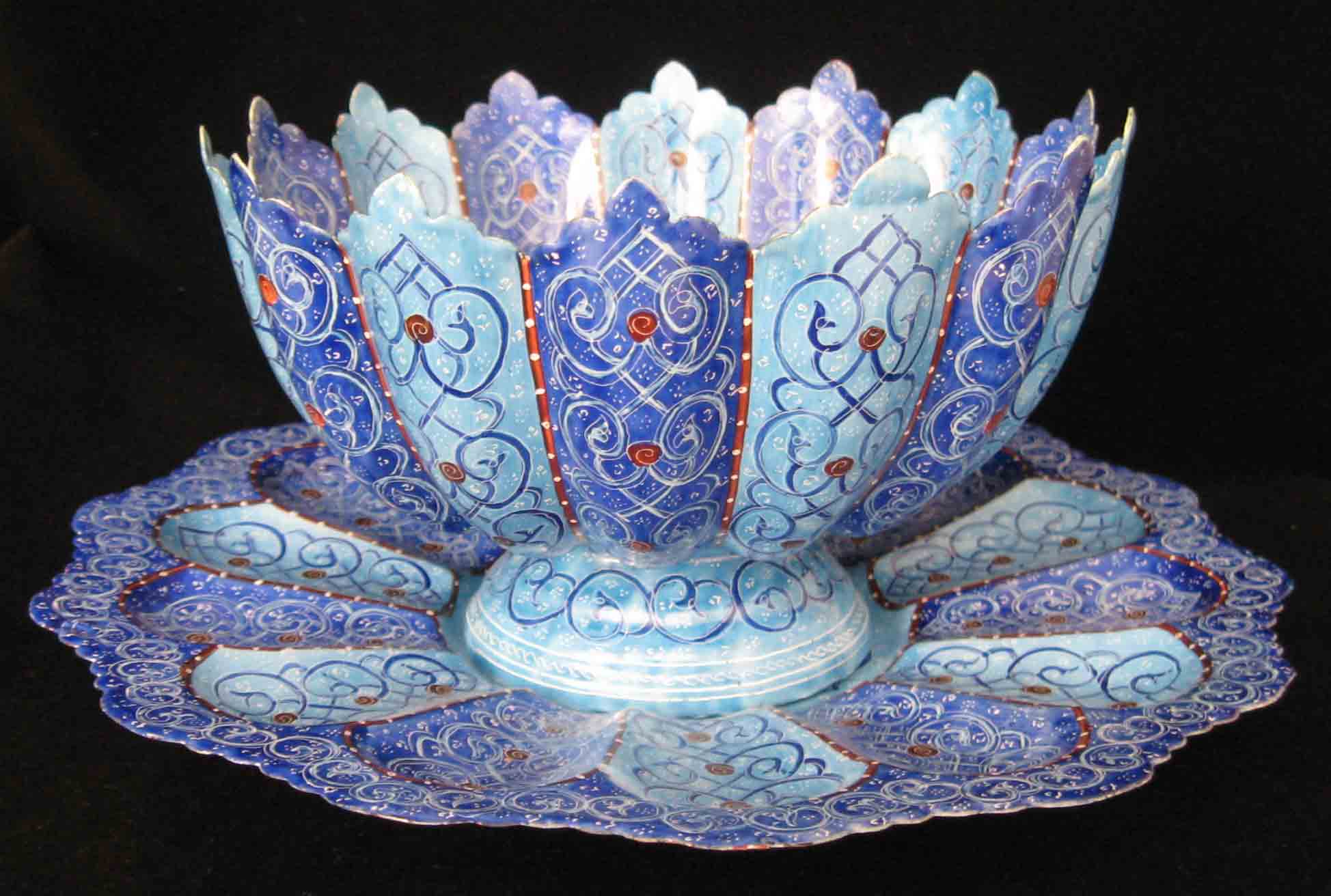
Termeh is a handwoven cloth of Iran, primarily produced in the Yazd province. Weaving Termeh requires a good wool with tall fibers. Weaving Termeh is a sensitive, careful, and time-consuming process; a good weaver can produce only 25 to 30 centimeters in a day. The background colors which are used in Termeh are jujube red, light red, green, orange and black.
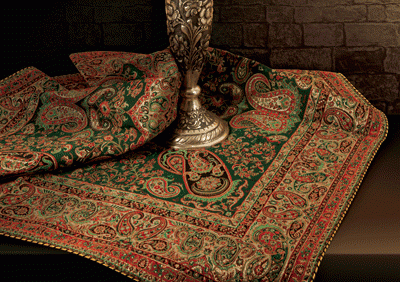
Qalamkari is a type of hand-painted or block-printed cotton textile. The word is derived from the Persian words ghalam (pen) and kari (craftmanship), meaning drawing with a pen (Ghalamkar). The fabric is printed using patterned wooden stamps.
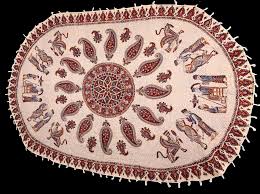
Rose Water Extraction in Ghamsar - The industry of rosewater extraction is associated with Ghamsar city near Kashan. This annual national ceremony is held during the months of May, June and July. The liquid essence is exported to France and Bulgaria as they are the largest producers of perfume in the world.
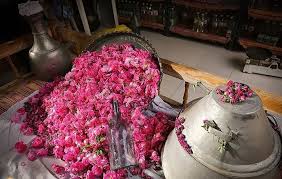
Pistachio - Iran’s pistachio as an exclusively Iranian fruit is one of the best pistachios in the world. Even today, with the introduction of the product from some other countries, Iranian pistachio still ranks first in international market thanks to its rich taste, unique way of processing, nutritive attributes and the eye catching appearance

Saffron - Saffron has an aroma and flavor which cannot be ignored, also it has a chemical make-up which, when understood, adds not only pungent and aromatic flavor to foods, but also a beautiful golden color. Extracts from the plant can also help with digestive problems and nervous disorders.
Saffron seeds are planted in may or August, then irrigated with care, before the bright pink or violet flowers bloom for about three weeks from mid October. The stigmas are separated and left to dry in sheds, or hung from the roof in special containers, and then crushed into powder.
It takes a staggering 2000 to 3000 flowers to make about 15g of saffron powder.
